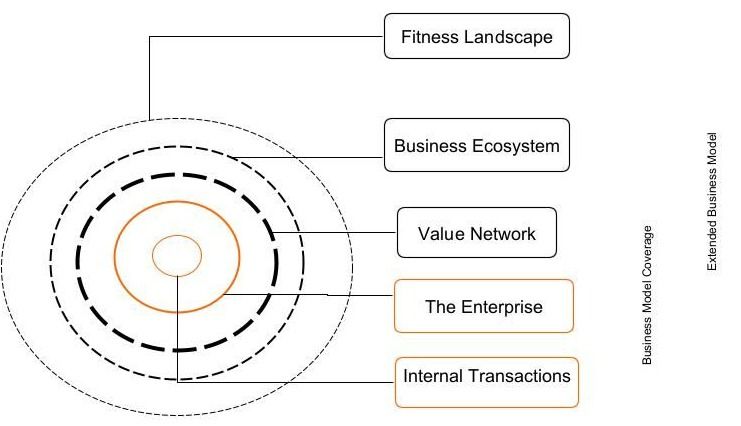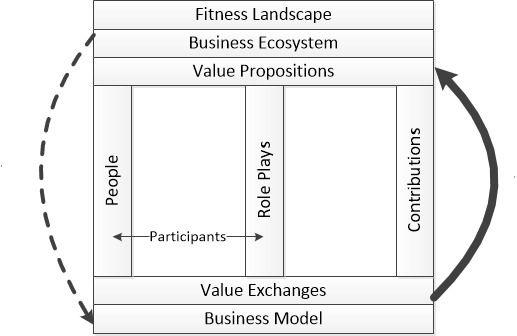The VES Terrain (W3)

VES provides a pathway for people at any level in the Terrain to discover how they can negotiate their roles to achieve breakthroughs and positive organizational outcomes collaboratively.

The Terrain consists of:-
Fitness Landscape: an analogy for the opportunities (near peaks and distant horizon ones), and potential pitfalls (hidden by mists in the intervening valleys) that an enterprise’s value propositions and blueprints must navigate for long-term success [1]. Consider horizon scanning.
Business Ecosystem: a network of organizations and other entities that potentially could be involved in the production, distribution, and consumption of goods and services. This includes suppliers, customers, competitors, and other stakeholders connected in some way through the exchange of value [2]. Consider choreographing.
Value Network: the actual relationships between different organizations and the value that they create or capture. It focuses on the actual flow of value between different entities that are in the ecosystem, and was initially used to differentiate between low-end and new-market disruptions [3]. Consider orchestrating.
The Enterprise: describes a group of persons in one or more firms working together under common ownership or control.
Internal Transactions: provides a more detailed picture of the core Participants in the Business Model. A tennis analogy is to group them initially into Front, Middle, and Back Courts before further subdivisions into operational components [4], [5].
Business Model: describes the structure of product, service, and information flows and the roles of the participating parties focused on a specific enterprise [6].
In VES, the configurations of all of the above are identical using just three components, Participants containing People and the Roles they play, and Deliverables.
This strips out all superfluous details and focuses only on essentials when mobilizing for action and assessing subsequent effectiveness.
{Although not mathematically dimensionally consistent, you can remember this as
P x R = D}
A tangible output of VES is a dynamic business model that scales from an enterprise’s internal transactions, through value networks to entire business ecosystems.
An intangible outcome is an agile organization with people engaged in enhancing efficiency and effectiveness.
Adapted from:-
[1] Beinhocker, E., 2006. The origin of wealth; evolution, complexity and the radical remaking of economics. London: Random House Business Books.
[2] Moore, J. F., 1996. The death of competition. New York, USA: HarperCollins Publishers.
[3] Christensen , C. M. & Raynor, M. E., 2003. The innovator's solution - creating and sustaining successful growth. Boston, USA: Harvard Business Review Press.
[4] Saint-Onge, H. & Chatzkel, J., 2009. Beyond the deal. USA: McGraw-Hill.
[5] Hagel, J., 2002. Out of the box - strategies for achieving profits today and growth tomorrow through web services. USA: Harvard Business School Press.
[6] Johnson, G., Scholes, K. & Whittington, R., 2005. Exploring corporate strategy. 7th ed. Harlow, UK: Pearson Education.



